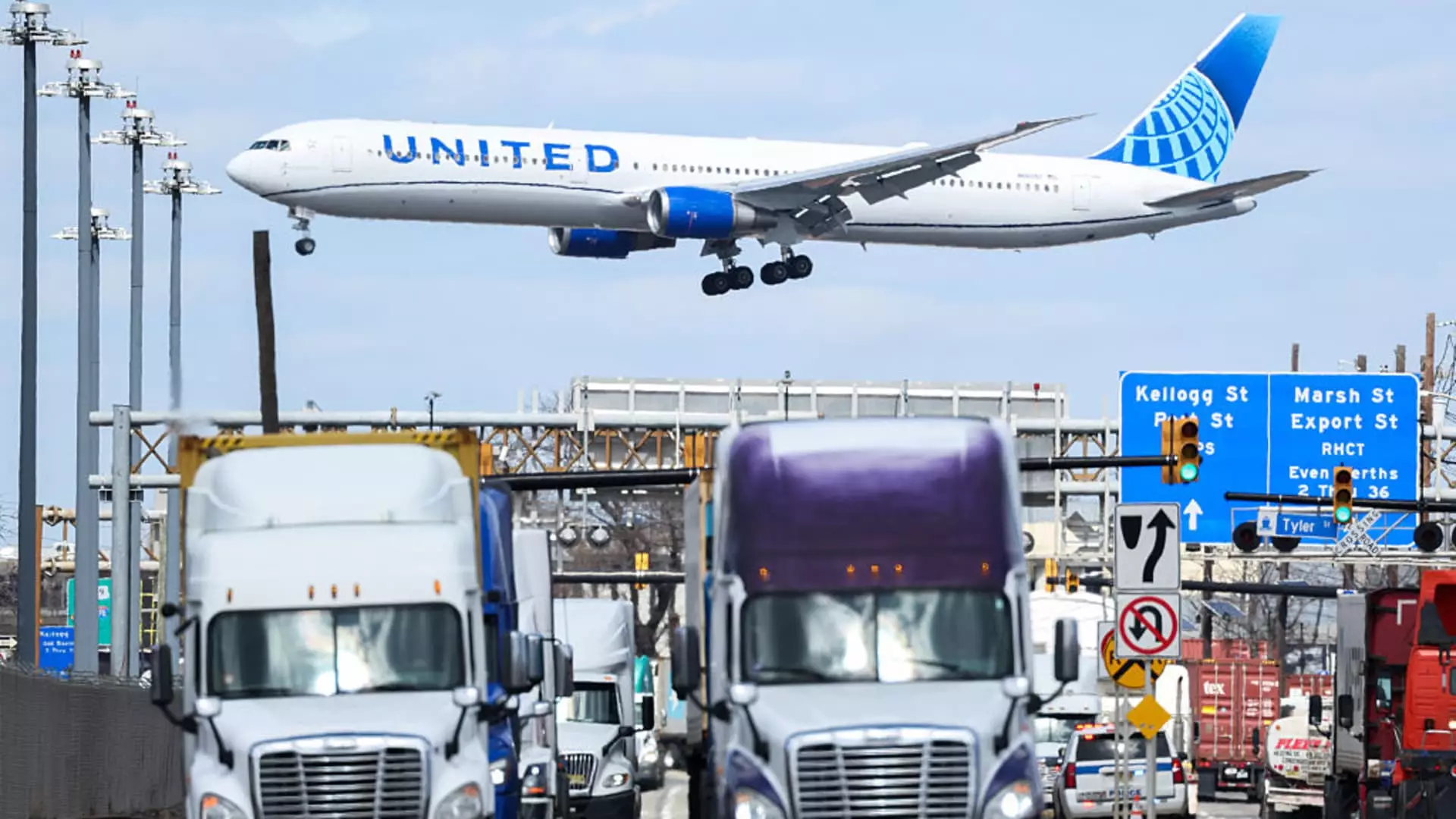In a tumultuous economic climate, United Airlines stands on a precarious ledge, balancing profitability against the looming specter of a recession. As the airline unveiled its impressive quarterly earnings, they also candidly acknowledged the unpredictability of the macroeconomic landscape. While it’s easy to view financial forecasts through a lens of optimism, the honesty in United Airlines’ communication signals a deeper understanding of the market’s fragility. The recognition that preparing for a potential economic downturn is as crucial as striving for growth speaks volumes about the airline’s strategic mindset.
In its recent announcement, United Airlines maintained its full-year profit expectations but took the unprecedented step of issuing two different projections: one assuming economic stability and another accounting for the possibility of a recession. This dual forecast approach reflects a prudent acknowledgment that while demand remains strong, the potential for a downturn is an ever-present reality, making their market predictions fraught with uncertainty. This is not just corporate caution; it represents a profound understanding prevalent in today’s aviation industry — a sector that is particularly sensitive to economic shifts.
The Domestic and International Dynamics
United Airlines’ decision to reduce domestic flight capacity by about 4% due to sluggish travel demand highlights a critical pivot point in their operational strategy. While domestic bookings are faltering, the demand for international, premium cabin experiences remains robust. This stark contrast prompts a reevaluation of where growth is found in today’s travel environment. It also raises questions about long-term consumer behavior. Are travelers reserving their budgets for international trips while tightening the reins on domestic travel?
This trend is reflective of a broader shift in travel patterns influenced by economic pressures. Travelers are showing a willingness to splurge on premium experiences when they fly, which United Airlines is apt to capitalize on. In juxtaposition, domestic travel’s stagnation could either signify a temporary blip or a more significant shift in the way Americans prioritize their travel plans. If the latter is true, it would require airlines to rethink domestic offerings in favor of more profitable international routes.
CEO Scott Kirby’s Vision
Scott Kirby, the CEO, offers a vision rooted in resilience and adaptability. His assertion that United Airlines will continue to execute its multi-year growth strategy demonstrates confidence in the company’s capacity to navigate choppy waters. Kirby recognizes that the airline’s performance has historically benefited during both favorable and adverse conditions. However, this leaves room for skepticism — is it genuinely viable to expect unwavering profitability when faced with impending economic uncertainties?
The essence of United’s strategy lies in its willingness to adapt and refine its operational practices in response to market conditions. Maintaining industry-leading margins in good times while gearing up for challenges requires an astute understanding of both the ebb and flow of customer demand. Nonetheless, despite these impressive metrics, there’s an undeniable risk involved with purely numeric forecasts, especially when they arise from the uncertainties of consumer sentiment drastically impacted by external macroeconomic factors.
The Silver Lining in Earnings
Despite grappling with an unpredictable environment, United Airlines reported a significant profit of $387 million for the first quarter of the year, starkly contrasting with last year’s loss. This recovery is noteworthy, but it also raises critical questions about sustainability. The airline’s adjusted earnings of 91 cents per share exceeded Wall Street expectations. But can this upward trajectory sustain itself amid fluctuating customer preferences and a potentially contracting economy?
While United Airlines saw a rise in premium bookings and international travel, one can’t ignore the warning signs. The decline in domestic revenue shows that while the airline’s strategy is currently bearing fruit, it might not be as robust as initially perceived. It indicates a fragility in the market, highlighting that optimism must be tempered with caution. One can only hope that United Airlines, under Kirby’s guidance, will remain responsive and grounded as it pursues growth against this backdrop of economic uncertainty.
In an era defined by unpredictable markets and changing consumer behaviors, loyalty may very well be earned through the wisdom of adaptable strategies rather than the numbers alone. In this ongoing saga of resilience and forecasting, United Airlines stands as both a beacon of hope and a focal point of caution in the aviation industry.

